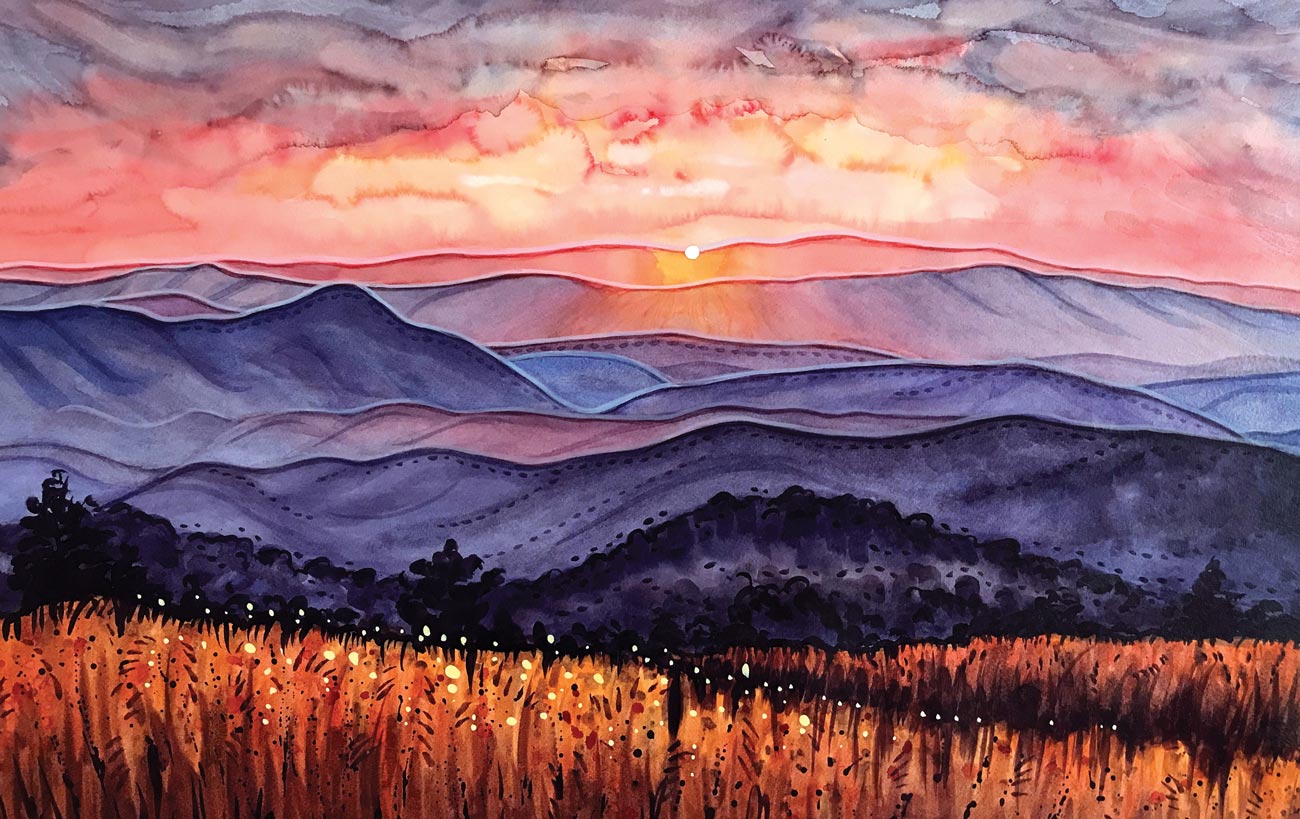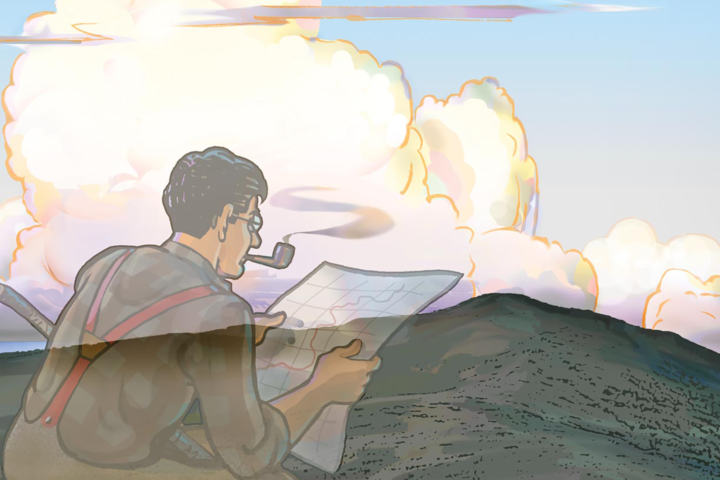By Laura Belleville
Getting to Work
December 10, 2021
“THE APPALACHIAN TRAIL IS CONCEIVED as the backbone of a super reservation and primeval recreation ground…, its ultimate purpose being to extend acquaintance with the scenery and serve as a guide to the understanding of nature.” (Benton MacKaye, 1921)
I don’t think that any of us is born a conservationist, at least not with fully formed ideas about ecosystems or a land ethic. That understanding comes after experiencing the outdoors, making sense of it, and finding the language to describe what we saw. For some, that language sounds like science, and, for others, it’s a painted picture or photograph or a hiker journal. But, it is innately human to go out into nature to discover, to find ourselves and all the world has to offer. And, at times, to hit the reset button. Benton understood this, for sure. He banked on those understandings to protect the Appalachian landscape.
Our collective connections to the natural world through outdoor recreation experiences become part of our shared values and aspirations. This shared inspiration motivated the hundreds of volunteers between 1925 and 1937 to connect the ends of the world’s first multistate long-distance hiking trail. It’s what continued to activate the corps of volunteers, staff, and agencies for the decades that followed.

Max Patch, North Carolina. Watercolor by Rebecca Harnish
I often imagine what it would have been like to sit around the table in 1925 as part of the team that mapped out how to make a 2,193- mile trail a reality. The vision. The commitment. The energy. With that box checked, it’s time to build on this success to ensure that we conserve the places that make the Trail experience one that, as MacKaye envisioned, “a better, wider place in which to live a better, wider life.”
We don’t have a table big enough to host the number of people that we need now and in the future to implement fully Benton’s vision. As a community of Trail enthusiasts and conservationists envisioning the next century, we need to continue to come together, not only in spirit but tangibly in collective action. Let’s make a promise, together, that we will:
Reflect: Enjoy the view and ask — what will the hiker a decade, five decades, or more than ten decades from now see? Embrace all that makes our lives better from that inspiring view. Take nothing for granted.
Learn: Consider how vital Appalachian forests are in mitigating climate change and ensuring resiliency. Learn more about how you can help protect forests.
Act: Do one small thing, or many, every year to make the A.T. and the surrounding landscape better — work on a Trail section; weigh-in on conservation policy issues; give generously to land trusts, to the Appalachian Trail Conservancy, and to conservation causes; invite new friends to our community — someone who never had the opportunity to connect to the myriad benefits of nature.
I am certain that the A.T. will be a better place 100 years from now with all our efforts. It will continue to be a People’s Trail, a legacy of civic engagement, and a lasting conservation corridor that offers millions of people incomparable experiences and long-lasting, treasured memories.
 Inspired by the Trail’s opportunity to connect people to nature and natural beauty, Laura Belleville joined the Appalachian Trail Conservancy in 2005, and now serves as Vice President for Conservation and Trail Management. Summers as a crew leader for a youth work crew in Harriman State Park, working on the A.T. and connecting teens to the land, sealed her passion for conservation work. Her career includes projects in the Amazon, the Everglades and the Florida Keys, Lake Erie, and the Appalachian Forests in Ohio.
Inspired by the Trail’s opportunity to connect people to nature and natural beauty, Laura Belleville joined the Appalachian Trail Conservancy in 2005, and now serves as Vice President for Conservation and Trail Management. Summers as a crew leader for a youth work crew in Harriman State Park, working on the A.T. and connecting teens to the land, sealed her passion for conservation work. Her career includes projects in the Amazon, the Everglades and the Florida Keys, Lake Erie, and the Appalachian Forests in Ohio.This article was originally published in our Fall 2021 issue of A.T. Journeys, the official membership magazine of the Appalachian Trail Conservancy.
Discover More

By Benton MacKaye
“An Appalachian Trail: A Project in Regional Planning”
Originally published in October 1921, Benton MacKaye's article establishing the idea for the A.T. still inspires and guides the ATC's efforts today.

BY DANIEL ANTHONY HOWE
The A.T. in Its Second Century
As we celebrate 100 years since the Appalachian Trail was proposed, what will it take to conserve the Trail for another century (and beyond)?

Official Blog
The Pathway from Recreation to Conservation
Through our actions on the Appalachian Trail and beyond, we can help conserve a precious natural resource and inspire others to do the same.
